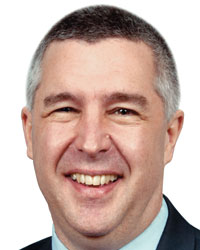Brisbane, AUSTRALIA
From: 6:30 PM Wednesday, 6 August, 2025
Registration opens at 6:30 AM ,8 May 2025
To: 9:30 PM Wednesday, 6 August, 2025
This lecture provides dental clinicians with a comprehensive update of contemporary dental caries management, across the lifespan. The first part of the lecture “what is happening and why?” will focus on assessing caries risk, with particular emphasis on factors that are often overlooked by clinicians that can play an important role in changing an individual’s caries risk status. Examples will be given of using pattern recognition to identify factors operating in patients with severe presentations of dental caries. Likewise, examples will be given of a diagnostic process to follow in cases where the patient reports few of the major risk factors as being present, yet clearly is suffering from caries progression.
The second part of the lecture “to drill or not to drill” looks at the decision-making process around lesions that have not yet cavitated, and how concepts of caries arrest can be applied to such sites. In this context, the use of more recent caries preventive materials will be discussed, including silver fluoride products, and glass ionomer cements, both singly and in combination. This part of the lecture will address changes in enamel and dentine that occur as part of the caries process, which can be used to assess the presence and state of carious lesions. Several simple to use and rapid methods will be described which can assist in everyday clinical practice.
Brisbane, AUSTRALIATOTAL CPD AVAILABLE FOR THIS EVENT: 2 HOURS
2 CPD HOURS
This event includes information on the following topics:
The intended audience for this event includes:
This lecture provides dental clinicians with a comprehensive update of contemporary dental caries management, across the lifespan. The first part of the lecture “what is happening and why?” will focus on assessing caries risk, with particular emphasis on factors that are often overlooked by clinicians that can play an important role in changing an individual’s caries risk status. Examples will be given of using pattern recognition to identify factors operating in patients with severe presentations of dental caries. Likewise, examples will be given of a diagnostic process to follow in cases where the patient reports few of the major risk factors as being present, yet clearly is suffering from caries progression.
The second part of the lecture “to drill or not to drill” looks at the decision-making process around lesions that have not yet cavitated, and how concepts of caries arrest can be applied to such sites. In this context, the use of more recent caries preventive materials will be discussed, including silver fluoride products, and glass ionomer cements, both singly and in combination. This part of the lecture will address changes in enamel and dentine that occur as part of the caries process, which can be used to assess the presence and state of carious lesions. Several simple to use and rapid methods will be described which can assist in everyday clinical practice.
Emeritus Professor Laurence J Walsh AO presents
Modern dental caries management: beyond drilling and filling
For dentists, hygienists, and therapists
This lecture provides dental clinicians with a comprehensive update of contemporary dental caries management, across the lifespan. The first part of the lecture “what is happening and why?” will focus on assessing caries risk, with particular emphasis on factors that are often overlooked by clinicians that can play an important role in changing an individual’s caries risk status. Examples will be given of using pattern recognition to identify factors operating in patients with severe presentations of dental caries. Likewise, examples will be given of a diagnostic process to follow in cases where the patient reports few of the major risk factors as being present, yet clearly is suffering from caries progression.
The second part of the lecture “to drill or not to drill” looks at the decision-making process around lesions that have not yet cavitated, and how concepts of caries arrest can be applied to such sites. In this context, the use of more recent caries preventive materials will be discussed, including silver fluoride products, and glass ionomer cements, both singly and in combination. This part of the lecture will address changes in enamel and dentine that occur as part of the caries process, which can be used to assess the presence and state of carious lesions. Several simple to use and rapid methods will be described which can assist in everyday clinical practice.

Prof Laurence J Walsh AO
BDSc (Hons) (Qld), DDSc (Qld), PhD (Qld), GCEd, FFOP (RCPA), FICD, FADI, FPFA, FIADFE
Laurie Walsh is a specialist in special needs dentistry who is based at the University of Queensland in Brisbane, where he is an emeritus professor. He has been working in clinical microbiology for...













